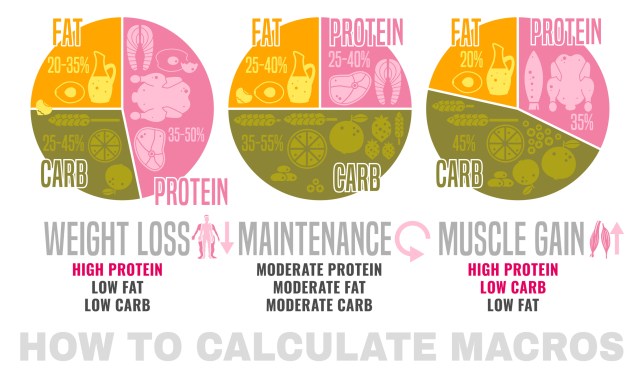
The Dietary Guidelines for Advisory Committee (DGAC) recently released its Scientific Report, which serves as the basis for the 2025-2030 Dietary Guidelines for Americans (DGA). It provides the government’s recommendations for what Americans should eat and drink to meet their nutrient needs, promote health and prevent disease. The report’s recommendations also include information on:
- Ultra-processed foods: The DGAC stated that limited evidence shows that diets with greater amounts of ultra-processed foods are associated with obesity or overweight in adults. They advised revisiting this aspect in five years when the next Committee is formed.
- Plant-based foods: Moderate evidence suggests that substituting processed or unprocessed red meat with plant protein sources, such as beans, peas, lentils, nuts or soy (like tofu), may lower the risk of heart disease. An Atkins-style vegetarian approach could support this recommendation if you follow a vegetarian diet. For those of you who aren’t vegetarians but still want to implement this advice, consider swapping out an animal-based protein source for a plant-based protein once or twice a week.
- Portion sizes: The DGAC found strong evidence that indicates larger portions increase caloric intake for adults and children. The nutrient-rich, satiating food you eat on Atkins naturally controls your portion sizes and curbs your hunger before you reach the point of overeating.
- Snacking: The DGAC concluded that limited evidence suggests daily snacking increases the risk of obesity. Specific snacking strategies are recommended to improve the nutritional quality of snacks. Atkins’ solid snacking strategy emphasizes nutrient-rich snacks and drinks that maintain energy and blood sugar levels instead of snacks and drinks with empty calories and added sugars.
The Committee suggests consolidating three recommended dietary patterns, U.S.-style, Mediterranean, and Vegetarian, into a single, flexible Eat Healthy Your Way Dietary Approach.
Here’s a breakdown of the three dietary approaches that the DGAC’s suggested Eat Healthy Your Way Dietary Approach is based on:
Healthy U.S.-Style: You’ll eat vegetables, fruits, whole grains, lean poultry and fish, low-fat dairy, healthy fats (avocado, nuts, olive oil), limit added sugars and saturated fats, and emphasize portion sizes to control calories.
Healthy Mediterranean-Style: This is primarily a plant-based diet rich in fruits, vegetables, whole grains, legumes (beans and lentils), nuts, olive oil, moderate amounts of fish and poultry, small amounts of low-fat dairy, and olive oil as a primary fat source. It also limits red meat, saturated fat and added sugars.
Healthy Vegetarian-Style: The focus is on vegetables, fruits, plant-based protein sources from tofu and other soy products, beans, peas and lentils, nuts and seeds, as well as whole grains, low-fat or fat-free dairy products or dairy alternatives, limit added sugars and refined grains.
Atkins’ Take on the Proposed Dietary Guidelines
Unfortunately, the DGA continues to disappoint. While it is a step in the right direction, with more flexible food preferences and recognition that most Americans are not meeting their minimum protein requirements, when the proposed DGA for 2025-2030 was created, there was no consensus on decreasing carbohydrates or emphasizing protein. Despite researchers publishing over 500 studies on lower-carbohydrate diets, the Committee can’t find any that meet its criteria for inclusion in the evidence used to form the DGA.
If you’ve read my books, Eat Right, Not Less, or The Atkins 100 Eating Solution, you know that nutrition is not a one-size-fits-all approach. A low-sugar, lower-carb, higher-protein lifestyle can be customized based on your goals. Reducing your carb intake while eating optimal protein can increase your energy and control your hunger, impacting your overall wellness. This is precisely where Atkins 100’s personalized and sustainable approach comes in and why everyone should eat this way: women and men, your family and friends.
Here’s how to do Atkins 100:
- Eat 100 grams of Net Carbs a day
- As with Atkins 20 and Atkins 40, eat at least 12 to 15 grams of Net Carbs a day of Foundation Vegetables.
- As for the remaining 85 grams of Net Carbs, spread them throughout the day among meals and snacks.
If your doctor recommends following the Eat Healthy Your Way Dietary Approach, the Atkins 100 plan can flex to fit almost any food preference or eating plan. Here’s how to give an Atkins-style spin to two approaches:
Atkins-Style Mediterranean Approach
Eat 100 grams of Net Carbs daily, from vegetables, fruits, legumes, some whole grains and starchy vegetables, dairy, poultry and fatty fish like salmon, nuts and seeds, avocadoes, olive and other vegetable oils.
Atkins-Style Mediterranean Meal Plan:
Breakfast: Chia Pecan Overnight Oats
Morning Snack: Blueberry Almond Protein Smoothie
Lunch: Pasta Salad with Tuna, Caper and Lemons
Afternoon Snack: Black Olives with Cheddar Cheese
Dinner: Baked Chicken with Artichokes and Green Bean, Smoked Mozzarella and Tomato Salad
Atkins-Style Vegetarian Approach
Eat 100 grams of Net Carbs, coming from vegetables, fruits, legumes, some whole grains and starchy vegetables, dairy, avocadoes, oil and other vegetable oils and plant-based protein sources such as legumes, nuts, seeds and soy products.
Atkins-Style Vegetarian Meal Plan:
Breakfast: Cheddar Omelet with Sauteed Onions and Shitake Mushrooms
Morning Snack: Acai Yogurt Parfait
Lunch: Tabbouleh Salad
Afternoon Snack: Cucumbers and Hummus
Dinner: Tofu Pad Thai
